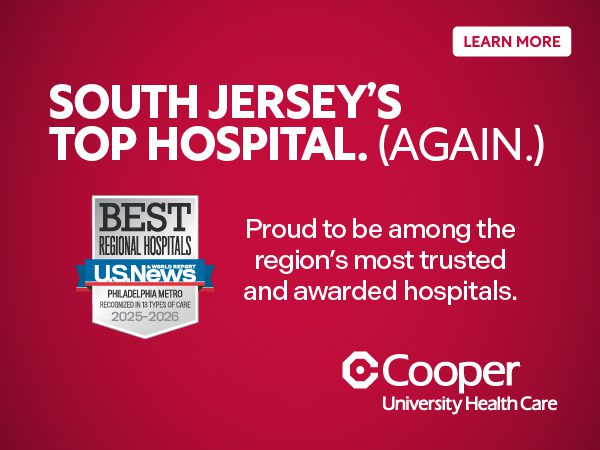Camden County Board of Commissioners: Parks Alive 2025
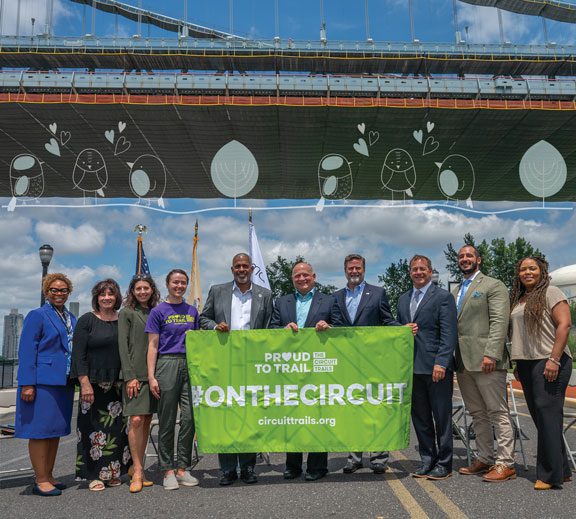
There are certain memories that stick with you no matter how much time has passed – hours spent on the playground with your family on a Saturday afternoon, live music played on an open-air stage on a summer evening, or weekend hikes with your dog.
 “These are the moments and spaces that turn a neighborhood into a community,” says Camden County Commissioner Jeffrey Nash. “It’s not something we take for granted – it’s something we need to create and protect.”
“These are the moments and spaces that turn a neighborhood into a community,” says Camden County Commissioner Jeffrey Nash. “It’s not something we take for granted – it’s something we need to create and protect.”
Recognizing the vital role that parks play in the community, the county decided to go beyond traditional park maintenance to refresh, revitalize, create and overhaul – sometimes completely – public spaces in Camden County.
In 2020, County Commisioners launched Parks Alive 2025, a strategic plan focused on the revitalization and development of its park system. The project aims to improve the quality of life for the more than 500,000 people living in Camden County by enhancing park facilities and green spaces. The initiative is designed to impact all aspects of community life with projects that promote economic development, community identity and engagement, arts and culture, tourism, recreation, education, safety, social equity, public health and wildlife conservation.
Those developments are no small feat – the Camden County Park system is made up of 24 parks and conservation areas offering more than 4,000 acres of public land, not to mention significant stretches of waterways throughout the county. But when the pandemic hit, county leaders saw just how important those spaces are.
“These are the moments and spaces that turn a neighborhood into a community. It’s not something we take for granted – it’s something we need to create and protect.” – Camden County Commissioner Jeffrey Nash
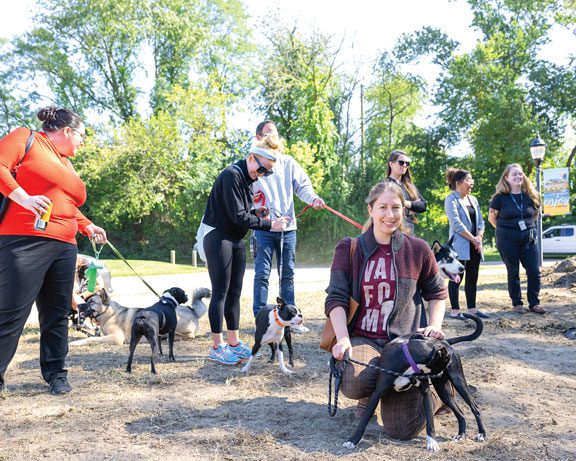
“The state-ordered shutdown only lasted a few months, but the pandemic went on much, much longer, and parks became one of the few relatively safe spaces,” says Nash. “People put on masks and flocked to every corner of Camden County, which really underscored not only how important these spaces are, but how much of a personal impact having access to open, green space can have on both your physical and mental health.”
Parks Alive 2025 includes a comprehensive range of initiatives, including vital environmental clean-up and protection efforts, advancements in ADA and Universal Design for greater accessibility and measures to bolster safety and security. This means the introduction of new equipment, upgrades to facilities, and much more, all aimed at fostering a better and more inclusive environment. The improvements are made possible through funding from the county, as well as crucial state and federal funding dispersed over the 5-year span.
Some of these projects are big, overarching community projects, such as the Camden County LINK Trail, which will create a 550-mile bicycle trail network spanning all the way from the Ben Franklin Bridge to Cape May Point.
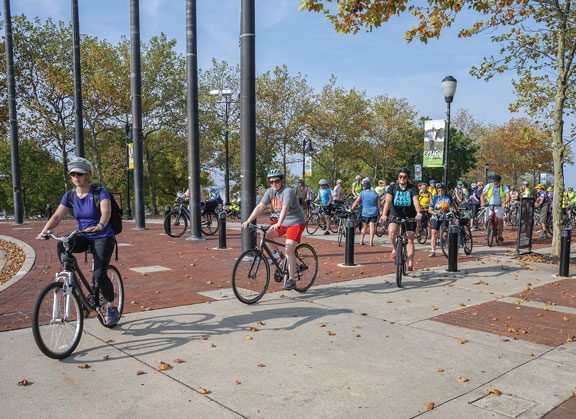
“Others,” says Nash, “are smaller but much-needed enhancements to community spaces. “While they may not be grand in scale, they hold monumental significance for the communities.”
Some of those projects include improvements to playgrounds in Haddon Heights and Cherry Hill, replacing surfacing at Jake’s Place playground and adding new amenities like fishing piers at Newton Creek, following a significant dredging project that wrapped up at the end of 2023.
This year, the county is focusing on several significant initiatives, including the reconstruction of the bay Marina at the Camden waterfront, the construction of an all-accessible playground in Winslow, and major renovations at Cooper River Park in Cherry Hill and Collingswood, among others.
“Whether we’re investing $1 million or $20 million into one of our parks, we make sure the community is fully engaged on every level.” – Camden County Communications Director Dan Keashen
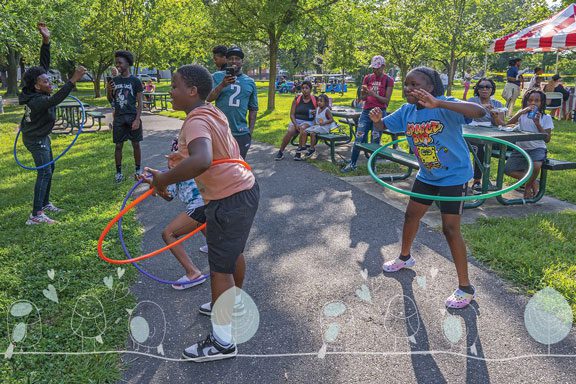
In the beginning, the county worked with engineers to assess existing equipment and propose new ideas. The plan prioritized safety first, fixing every piece of equipment in disrepair. From there, each project came to fruition with significant input from the community through public forums, and partnerships with community leaders and local nonprofit organizations.
“Whether we’re investing $1 million or $20 million into one of our parks, we make sure the community is fully engaged on every level,” says Dan Keashen, Camden County’s communications director, who leads the charge on ensuring that both the media and the public are up to date as the Parks Alive 2025 plan unfolds. “We actively look for the input to make sure we provide the best spaces possible and are open to feedback every step of the way.”
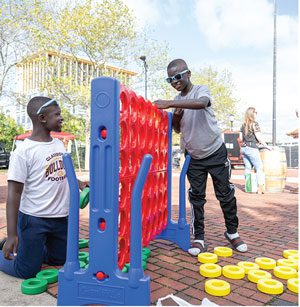 At Cooper River Park, for example, the county is building a new skateboard park, which was designed with the help of more than 100 younger residents and families.
At Cooper River Park, for example, the county is building a new skateboard park, which was designed with the help of more than 100 younger residents and families.
“We didn’t want to just come in and tell the community what they needed or how it needed to look,” says Nash.
Ultimately, the idea is to bring back widespread access to a “third” place – a place to spend time and socialize outside of your home or work.
“In today’s society, it can be very expensive to find a third place, whether it’s spending time in a cafe or taking your family to a movie,” says Keashen. “This concept shouldn’t be a luxury – everyone should have access to safe, well-maintained third places that are free and easy to access.”
The goal is to create spaces that impact individuals as much as the community as a whole.
“We’re building a new fully accessible playground in Winslow,” says Nash, “I have an autistic niece and nephew who live in Virginia, and my sister brings the kids to play there because it’s one of the few spaces that truly takes into consideration the needs of children on the spectrum or with different physical capabilities.”
That, he says, is just one small example of the increase in people visiting South Jersey from out of state. These projects do more than just improve quality of life and increase property values – they’re also putting South Jersey spaces on the map for visitors from all over the region and the world. Cooper River Park in particular has become a magnet for national and international events – holding rowing regattas that bring some of the best crew athletes in the world, including decorated Olympians.
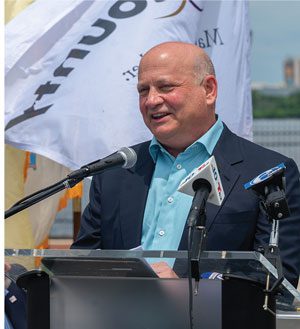
Camden County Commissioner Jeffrey Nash
“These regattas draw in tens of thousands of people to our community,” says Nash. “Every hotel is booked. Every restaurant is filled. An economic impact study showed these events have brought a $20 million boom to the economy in Camden County.”
While tourism ticks up every day, other draws are more permanent.Young families are flocking to Camden County due to good schools, transportation and quality of life.
“Housing demand in Camden County is through the roof, partly due to the quality of life provided by the park systems,” says Keashen. “These changes – large and small – have transformed the way people see the type of life you can have in a county like ours.”
Even the City of Camden, he says, is no different. Revitalization of Camden’s parks have transformed them from neglected spaces to vibrant community assets.
“We found a lot of parks in significant stages of disrepair, which made them more likely to be used for negative activities, like drug deals,” says Nash. “We worked directly with Camden community leaders to bring some of these areas back to life.”
Some of the most notable projects in Camden City include revitalizations of Cramer Hill Park, the Delaware River waterfront park converted from the old Harrison Avenue Landfill, Pyne Poynt Park, which led to the rebirth of North Camden’s Little League project, and the football field at Whitman Park.
 “If you looked at that football field before, you’d be shocked that anyone would even consider using it – it was in terrible disrepair,” says Nash. “We put in a turf field with lights. Now it’s a spot where you can find youth Camden teams, as well as any of the 7 active NFL players who have played there.”
“If you looked at that football field before, you’d be shocked that anyone would even consider using it – it was in terrible disrepair,” says Nash. “We put in a turf field with lights. Now it’s a spot where you can find youth Camden teams, as well as any of the 7 active NFL players who have played there.”
There are still projects to be completed heading into year 4 of the 5-year plan, and the parks department is working around the clock to make it happen. Pulling it all together will be a website that will identify and host information on every recreational venue in Camden County, whether it be state, county, municipal or school district.
“If you want to find hiking trails, we’ll have a detailed map of every option in the county. If you’re going kayaking, you’ll be able to log onto the website and find every boat launch. If you are looking for a fully accessible playground, it will be easy to find,” says Nash. “Right now, that information only exists in pieces – you can find town-wide information in one place, state-wide in another, nationwide somewhere else. At the end of the day, people don’t care whether a trail is a state trail or municipal. They just want to go on a hike.”
With so many green spaces available, he says, there’s no reason anyone should have to search all over the internet to find the amenities they’re looking for.
“It’s a work in process, but we’re excited to create one comprehensive resource for people who want to explore everything our community has to offer,” says Nash. “Because Camden County has so much to offer – and even more to come.”

Key Impact Areas of Parks Alive 2025:
Tourism: Enhance facilities for both private and public events, generate sponsorship revenue and attract visitors, which in turn supports local businesses.
Environmental: Improved air quality, enhanced water filtration, preservation of watershed areas, environmental cooling and conservation of land and wildlife.
Economic Development: Increase property values, boost tax and tourism revenue, reduce water treatment costs and attract retirees, homebuyers, employees and talent to the area.
Community Identity and Engagement: Foster neighborhood connections, enhance community pride and encourage participation in local events.
Arts and Culture: Attract cultural events that provide economic opportunities for artists, enrich community life and increase local spending.
Recreation: Spaces for sports, play and creativity, aiming to improve physical skills and reduce boredom among residents.
Education: Partnerships with youth organizations, educational activities related to local flora and fauna, and historical tours promoting environmental awareness.
Safety and Neighborhoods: Create safer spaces, reduce crime, enhance informal surveillance, and build community trust.
Social Equity and Access: The projects will accommodate individuals of all abilities and provide equitable access to park amenities for people from all socioeconomic backgrounds.
Public Health and Wellness: Spaces for physical activity, relaxation and mental health.
Conservation: Conserving habitats, ecosystems, historical sites.

camdencounty.com

 “These are the moments and spaces that turn a neighborhood into a community. It’s not something we take for granted – it’s something we need to create and protect.” – Camden County Commissioner Jeffrey Nash
“These are the moments and spaces that turn a neighborhood into a community. It’s not something we take for granted – it’s something we need to create and protect.” – Camden County Commissioner Jeffrey Nash